Alumina foam ceramics is an important branch of three types of foam ceramics (alumina, silicon carbide, zirconia), and it is also the earliest type of foam ceramics. It is widely used in the aluminum and alloy casting industry. At present, with the continuous improvement of the performance requirements of aluminum and aluminum alloy products, new requirements have been continuously put forward for aluminum liquid filtration, which requires casting characteristics such as high purity, less float, and smooth aluminum liquid flow rate to achieve the casting. Aluminum products have better physical and chemical properties and machining performance, so as to meet more stringent use conditions and achieve the purpose of extending the service life of aluminum products.
Alumina Foam Ceramics Production
Every technological process in the production of foamed ceramics has an impact on the quality of foamed ceramic products, of which the key process ingredients, sponge processing, and sintering have the greatest impact on product quality. The spraying process mainly affects the product quality and appearance, and at the same time, it also has a certain influence on the internal quality.
Slurry Size
The size of the slurry determines the dispersion of the sprayed slurry. The finer the slurry particles, the better the dispersion of the sprayed slurry and the more uniform the slurry sprayed on the green body. At the same time, the finer the particle size of the slurry, the smaller the wear of the nozzle. The size of the slurry particle size also determines the sintering condition of the product surface. In general, slurry with 400 mesh sieve residue less than 0.5% is used as the foam ceramic filter plate spray slurry, and the formula sintering temperature is lower than the green body sintering temperature.

Slurry Moisture Content
The moisture content of the slurry is a direct factor that determines the consistency of the slurry, which directly affects the quality of the spraying effect. For the spraying process after sizing, the water content of the slurry cannot be too low. Otherwise, blind holes will appear after spraying, and the spraying effect is not good. The water content of the slurry is generally controlled at 35% to 40%. For the spraying process after drying, the surface of the green body is dry and hard, and it has a large adsorption effect on the spraying slurry with a large consistency. Therefore, the water content of the sprayed slurry should be controlled to be lower, and the effect of spraying the slurry on the surface is better. The water content of the sprayed slurry is generally controlled at 25% to 35%. When the water content of the sprayed slurry is low, it is necessary to select an air compressor with a larger pressure and a nozzle with a larger diameter to achieve a good spraying effect.
Slurry Spraying Volume
The amount of slurry sprayed is an important indicator for measuring whether the spraying effect is ideal, and also an important factor for whether the spraying of each blank is uniform. Therefore, many companies index it and set specific parameters for different specifications of filter plates to ensure that the product spraying meets the process requirements and achieves the specified spraying effect.
For filter plates of different sizes, the amount of slurry sprayed is different. Of course, for the slurry with different water content, the spraying amount is different. The particle size, water content and spray volume of the sprayed slurry all play an important role in the sprayed effect. Among them, the particle size of the slurry determines the dispersion and uniformity of the spraying and the final sintering of the surface; the moisture content of the slurry affects the consistency of the slurry; the consistency of the slurry determines the effect of the thickening of the net line on the surface of the blank; the amount of spraying is a measure of whether the spraying is Important parameters to meet the technological requirements.



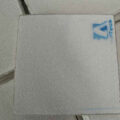

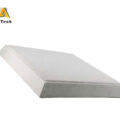
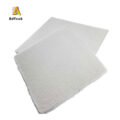


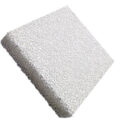


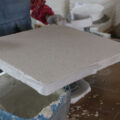
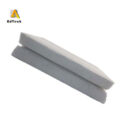
Pingback:Foam Ceramic Filter Production – 站点标题